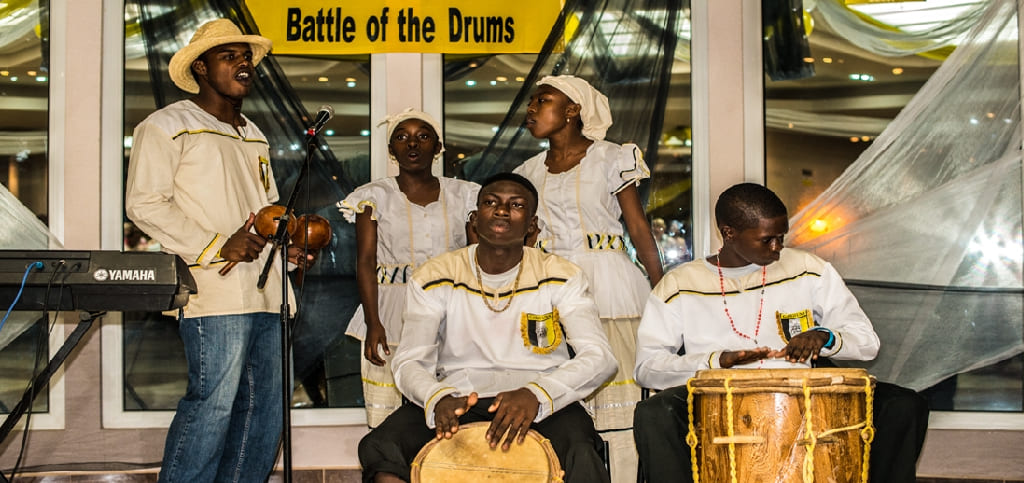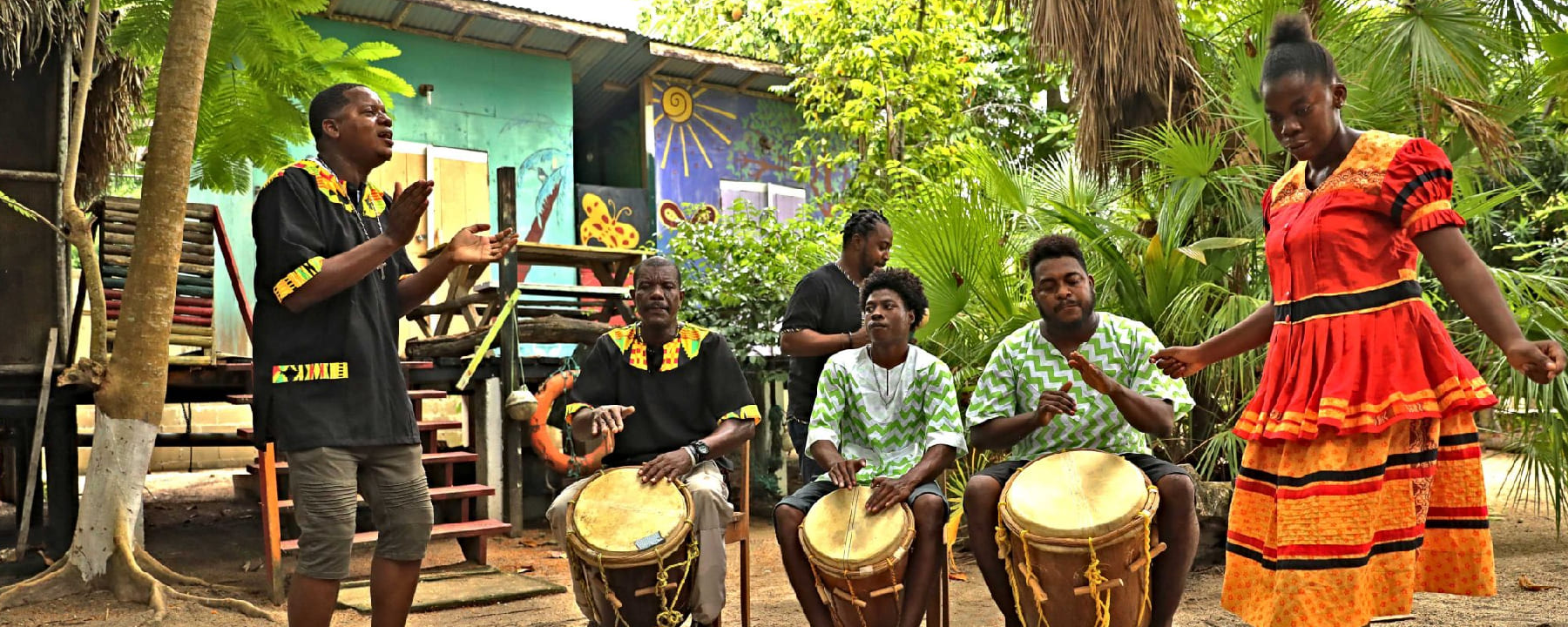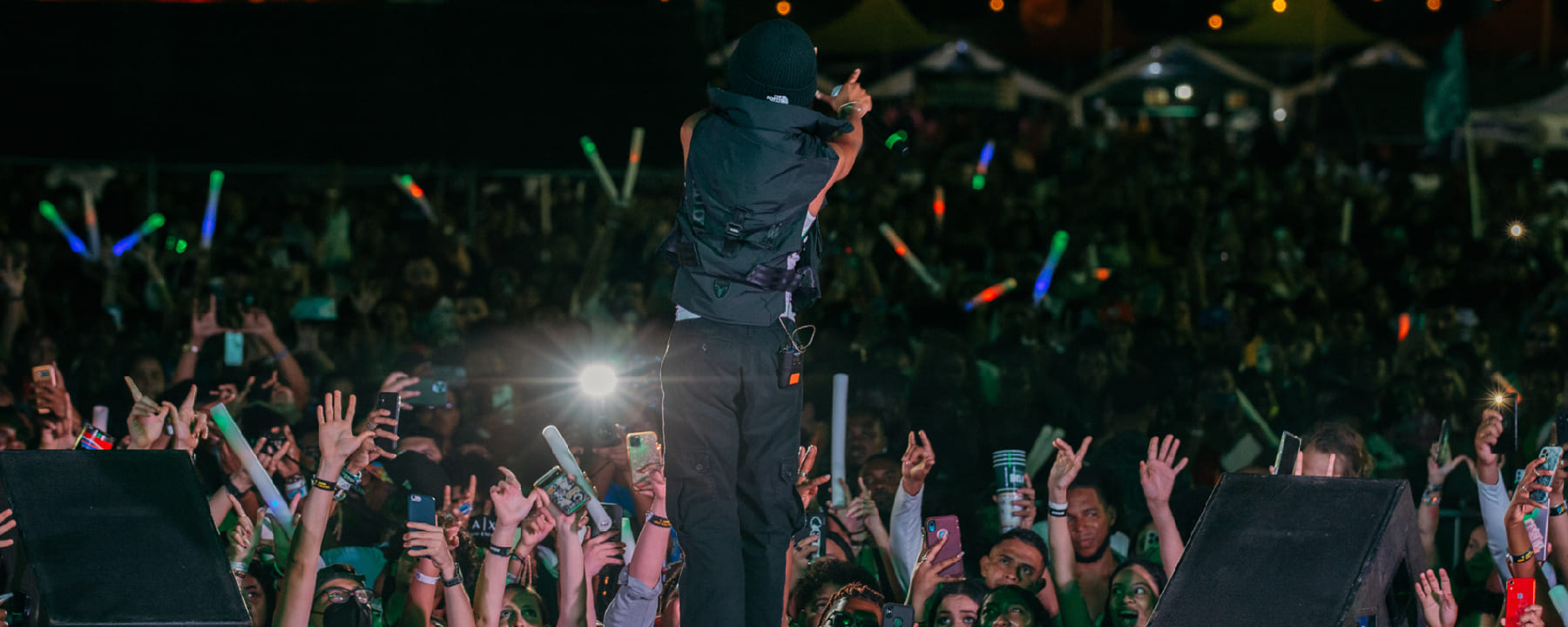Quick Links: About Us - Contact Us

The deep, resonant beat of a Garifuna drum is more than just music — it’s the heartbeat of Belize’s soul. Along the golden coasts of Hopkins and Dangriga, the rhythmic pulse of Garifuna drumming carries through the air, connecting generations, communities, and cultures. This unique sound, once heard only in small coastal villages, has now found its way to international music festivals, world stages, and UNESCO recognition.
Belize’s music culture is a reflection of its people — diverse, vibrant, and deeply rooted in heritage. Among its many musical traditions, Garifuna drumming stands out as a powerful expression of identity and resilience. It’s not just entertainment; it’s storytelling, celebration, and spiritual communication wrapped in rhythm.
In this feature, we’ll explore how Garifuna drumming grew from its ancestral roots into a globally recognized art form, meet the legends who carried it to fame, and discover how travelers can experience it firsthand in Belize.
The Roots of Garifuna Drumming
The story of Garifuna drumming begins with the Garifuna people — descendants of African and Indigenous Carib and Arawak ancestors who were exiled from St. Vincent in the late 1700s and eventually settled along the Caribbean coasts of Central America, including Belize. Despite their displacement, they carried with them a rich cultural legacy that would flourish in their new homeland.
For the Garifuna, music has always been a language of life. Drumming plays a central role in spiritual and communal events, from joyful celebrations to solemn ceremonies. It accompanies dances, storytelling, and rituals that honor ancestors and express community values. The rhythms themselves are steeped in meaning — each beat representing connection, emotion, and history.
There are two main types of drums used in Garifuna music: the Primero (lead drum) and the Segunda (bass drum). Both are traditionally made from hollowed-out hardwoods like mahogany or mayflower, and covered with stretched deerskin. The Primero leads with complex rhythms and improvisations, while the Segunda maintains the steady heartbeat that ties the music together. The maracas, known locally as sisira, add a distinct shake that completes the ensemble.
These instruments are more than tools of music; they are sacred creations. Drum-making itself is a respected craft, involving prayers and rituals to honor the spirit of the tree and animal whose materials are used. This deep spiritual connection has helped preserve the authenticity of Garifuna drumming through centuries.

From Village Shores to the Global Stage
For generations, Garifuna drumming thrived within local communities — especially in coastal Belizean villages like Hopkins, Dangriga, and Seine Bight. It was the soundtrack to life: heard at weddings, festivals, and community gatherings. But in the 20th century, as Belize opened to the world, Garifuna music began to reach beyond its shores.
Cultural festivals, tourism, and international collaborations helped introduce Garifuna rhythms to global audiences. The turning point came in 2001, when UNESCO declared the “Garifuna language, music, and dance” a Masterpiece of the Oral and Intangible Heritage of Humanity. This recognition not only honored the Garifuna people but also put Belize on the map as a center of living cultural heritage.
The UNESCO designation drew attention from ethnomusicologists, travelers, and musicians worldwide, sparking new interest in Belizean rhythms and storytelling traditions. Belize’s growing tourism sector further amplified this exposure, as travelers sought authentic cultural experiences beyond beaches and reefs.
Today, Garifuna drumming is featured on international stages — from world music festivals to collaborative projects blending Afro-Caribbean, reggae, and contemporary styles. Yet, despite its global reach, the music has never lost its roots in community, spirituality, and tradition.

Famous Garifuna Drummers and Performers
No story about Garifuna drumming would be complete without mentioning the icons who brought this music to the world’s attention.
Andy Palacio remains one of Belize’s most beloved cultural figures. A musician, activist, and cultural ambassador, Palacio dedicated his life to preserving and promoting Garifuna heritage. His landmark 2007 album, Watina, recorded with The Garifuna Collective, gained international acclaim for its emotional depth and authenticity. Critics around the world hailed it as one of the greatest world music albums of the decade, and it earned Palacio a UNESCO Artist for Peace designation before his untimely passing in 2008.
Following his legacy, The Garifuna Collective continues to perform globally, blending traditional drumming and chants with modern sounds. Their tours across Europe, North America, and the Caribbean have introduced thousands to Belize’s cultural heartbeat.
Another legendary figure is Paul Nabor , a revered Paranda singer and guitarist from Punta Gorda. Known for his soulful voice and spiritual depth, Nabor’s music carried stories of love, loss, and faith that transcended language barriers. He performed well into his later years, becoming a symbol of resilience and devotion to Garifuna traditions.
Other notable artists include Aurelio Martinez from Honduras, who has collaborated closely with Belizean musicians to spread Garifuna music internationally, and Umalali, a group featuring powerful Garifuna women’s voices that blend ancestral chants with contemporary melodies.
Together, these artists have ensured that Garifuna drumming is not just preserved — it continues to evolve and inspire new generations.
Experiencing Garifuna Drumming in Belize
Hearing Garifuna drumming in person is one of the most immersive cultural experiences you can have in Belize. Fortunately, visitors have many opportunities to witness it live — whether in vibrant festivals or intimate village settings.
Hopkins Village is often called the “cultural heart” of the Garifuna people. Here, the rhythms of drums echo through the village almost nightly. You can visit the Lebeha Drumming Center, where local musicians teach the history, techniques, and spiritual meaning behind each beat. Visitors are encouraged to join in, learning to play the drums themselves — a memory that often becomes the highlight of their trip.
Dangriga, the cultural capital of southern Belize, is another must-visit destination for music lovers. The town comes alive each November 19th for Garifuna Settlement Day, a national holiday commemorating the arrival of the Garifuna people to Belize. Parades, drumming, dancing, and traditional foods fill the streets, creating an unforgettable cultural celebration.
Other areas, like Seine Bight and Punta Gorda, also host smaller gatherings where visitors can witness authentic community performances. Many resorts and tour operators now partner with local musicians to offer cultural nights that feature live Garifuna music alongside traditional cuisine.
For festival-goers, events like the Belize International Music and Food Festival and Battle of the Drums showcase Belize’s musical diversity and include electrifying drumming performances that capture the nation’s spirit.
Whether you’re watching an energetic Punta dance or listening to the soulful strum of a Paranda guitar, Garifuna drumming brings you closer to the heart of Belizean life.
Preserving a Living Tradition
Despite its international fame, Garifuna drumming faces challenges in preservation. Modernization, migration, and cultural assimilation threaten traditional practices. Yet, Belizean communities and cultural organizations are actively working to protect and pass down this heritage.
Local schools and cultural centers now include Garifuna music and language in their curricula. Programs led by organizations like the National Garifuna Council and community leaders help young people learn drumming, dance, and storytelling. These efforts not only preserve history but also empower youth to take pride in their identity.
Tourism also plays an essential role in sustaining Garifuna drumming. By supporting local musicians, attending performances, and participating in workshops, visitors contribute directly to the cultural economy and help keep these traditions alive.
In the villages of southern Belize, the drum still beats — not as an echo of the past, but as a living pulse of identity, unity, and pride.
Conclusion
From its humble origins on the shores of Belize’s southern coast to its recognition on the world stage, Garifuna drumming has become a symbol of cultural endurance and artistic brilliance. Its rhythms tell stories of survival, community, and joy — a universal language that connects hearts across continents.
Today, when you hear the powerful beat of the Primero and Segunda, you’re not just listening to music — you’re witnessing centuries of history kept alive through sound.
If you’re planning a visit to Belize, make time to experience Garifuna drumming firsthand. Join a workshop in Hopkins, celebrate Settlement Day in Dangriga, or simply sit by the sea as the drums call out to the stars. It’s a rhythm that will stay with you long after you leave — the unforgettable heartbeat of Belize.

